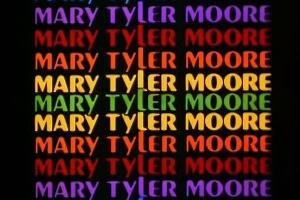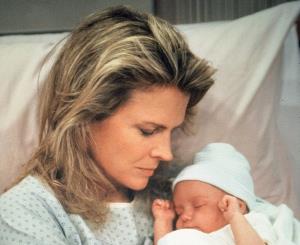Editor’s Note:
With the upcoming series finale of "The Newsroom
," we thought it might be good to take a look back at what we think of as its predecessor: "Murphy Brown
." While "Murphy"
was a sitcom that some say influenced many others in the same genre (and vice versa), it also addressed real issues of the day, as in "The Newsroom,"
even becoming part of the news itself when then-Vice President Dan Quayle brought Candice Bergen’s character into the political discourse. Through a recollection of the pilot episode of "Murphy Brown
," and the genius of the show in general, TVWW’s Ed Martin reminds us that the more things change, the more things stay the same.
It will make many readers of this column feel quite old when I refer to Murphy Brown, one of the most “contemporary” comedies in television history, as a “classic.” I remember enthusiastically writing about this show whenever I was able; in fact, I began my career in television criticism and analysis in the fall of 1989 at the exact time Brown began its second season.
The American television audience, which was still fumbling with the “complex” settings on its VCRs and learning to cope with the frequent system failures and wretched service that characterized the early years of widespread cable television, was all too ready for a smart situation comedy, especially one that mined great humor at the expense of the media. There had only been one other of any note, and it just happened to be not only the finest of its kind but one of the best television series in the history of the medium (a distinction it still holds to this day). But The Mary Tyler Moore Show had been off the air for 11 years when Murphy Brown arrived.

Comparisons between the two were unavoidable, as they both revolved around a single adult woman working in television news. (Ms. Moore once told me that she felt that Murphy Brown had “borrowed a few things” from her show.) Mary Richards and Murphy Brown couldn’t be more dissimilar. Sweet and unassuming Mary was working her way up the ranks of television news production at a small Minneapolis TV station, the now-legendary WJM, inadvertently throwing herself into a new career after enduring a very bad break up. When Murphy Brown began, the ferocious title character, somewhat subdued after a month in rehab, was ready to resume her brilliant career as an internationally acclaimed, Emmy Award-winning television journalist on a newsmagazine titled FYI, a show that resembled 60 Minutes and 20/20. Mary was living in a studio apartment in Minneapolis and enjoying life with her friends Rhoda Morgenstern, Phyllis Lindstrom and Georgette Franklin. Murphy was still mixing it up with politicians and celebrities in Washington, D.C. and going home to her palatial Georgetown brownstone every night, largely alone except for her ever-present painter Eldin Bernecky and, eventually, her baby boy Avery.
I recently watched the very first episode of Murphy Brown on Encore Classic and found that it held up as an amazing half-hour of expertly constructed scripted television comedy (which was pretty much my impression when I first watched it 26 years ago). Despite the shoulderpads in the women’s jackets and the big hair on almost everyone – and the rapid-fire references to the newsmakers and news events of the ‘60s, ‘70s and ‘80s – it didn’t feel at all dated. If anything, it evoked great nostalgia, functioning as a time capsule of what the media used to be before digital technology and the Internet came along. (Murphy Brown ended its run in 1998, around the time that home computers and dial-up Internet connections were becoming common household essentials. I can’t recall if the show reflected the changes those advances in technology were bringing about. All I remember about its later years is that Murphy’s son seemed to disappear, Paul Reubens and Garry Marshall had become recurring cast members and, at the last, Murphy spent a year fighting and eventually beating breast cancer.)
By way of introducing its title character, the pilot of Murphy Brown begins with multiple close-ups of framed magazine covers featuring Murphy. Back then, and for decades before, there was no greater acknowledgment of success for anyone in almost any profession than cover stories in such magazines as Time, Newsweek, Life and Esquire, each of which is shown in the sequence. Cover stories in magazines are still coveted today (a current storyline on ABC’s Nashville involves the complications resulting from country superstar Rayna Jaymes being profiled in Rolling Stone), but they don’t have the same quality of absolute achievement that they once did, because the Internet has provided so many more showcases for famous folks, even those who don’t deserve to be.
The dialogue in the Murphy Brown pilot also references the urgency of appealing to younger demographics, an unfortunate component of the sometimes-ruinous relationship between advertising and most forms of media, including the press. Demographic desirability was certainly important then, but it wasn’t yet the combustible obsession it would become in the ‘90s and beyond, when the manic need to appeal to young people would begin to compromise (and sometimes destroy) so many areas of news and entertainment.

There is something to appreciate and reflect upon in almost every moment of that half-hour. I’m certain that’s true of every episode that followed, up to and including the birth of Murphy’s baby (right) at the end of season four, which put the show on a legendary collision course with then-Vice President Dan Quayle. The show’s response at the start of season five to Quayle’s harsh remarks about Murphy’s status as a willing single mother remains the most meta moment in the history of scripted television. (To put this present-day terms, Murphy was meta before meta was even a thing.)
Also worth noting in the pilot is the arrival at FYI of Miles Silverberg, a neurotic, twenty-something would-be hot-shot new executive producer (played to perfection by Grant Shaud) brought on board to bring youthful energy to the show. (Says an exasperated Murphy upon learning Miles’ age, “While I was getting maced at the Democratic convention in ’68 you were wondering if you would ever meet Adam West!”) The network also hires a pretty young blond reporter, Corky Sherwood (Faith Ford) to help raise ratings and attract younger viewers to the show. None of this sits well with Murphy, who wisely believes that experience should count for something in the wide world of media, especially television news.
What really stood out, though, was the observation that Miles and Corky never actively belittle or feign superiority over the older, more experienced people around them. They are both smart enough to realize they could learn a lot from Murphy and other senior colleagues at FYI. They don’t act as though they always know best. They aren’t empowered or entitled. They are just hardworking and eager to excel.
More than twenty-five years after its debut, Murphy Brown is still revealing more about us than we realize.
A shorter version of this column was first published in the Planet Ed blog at MediaBizBloggers.